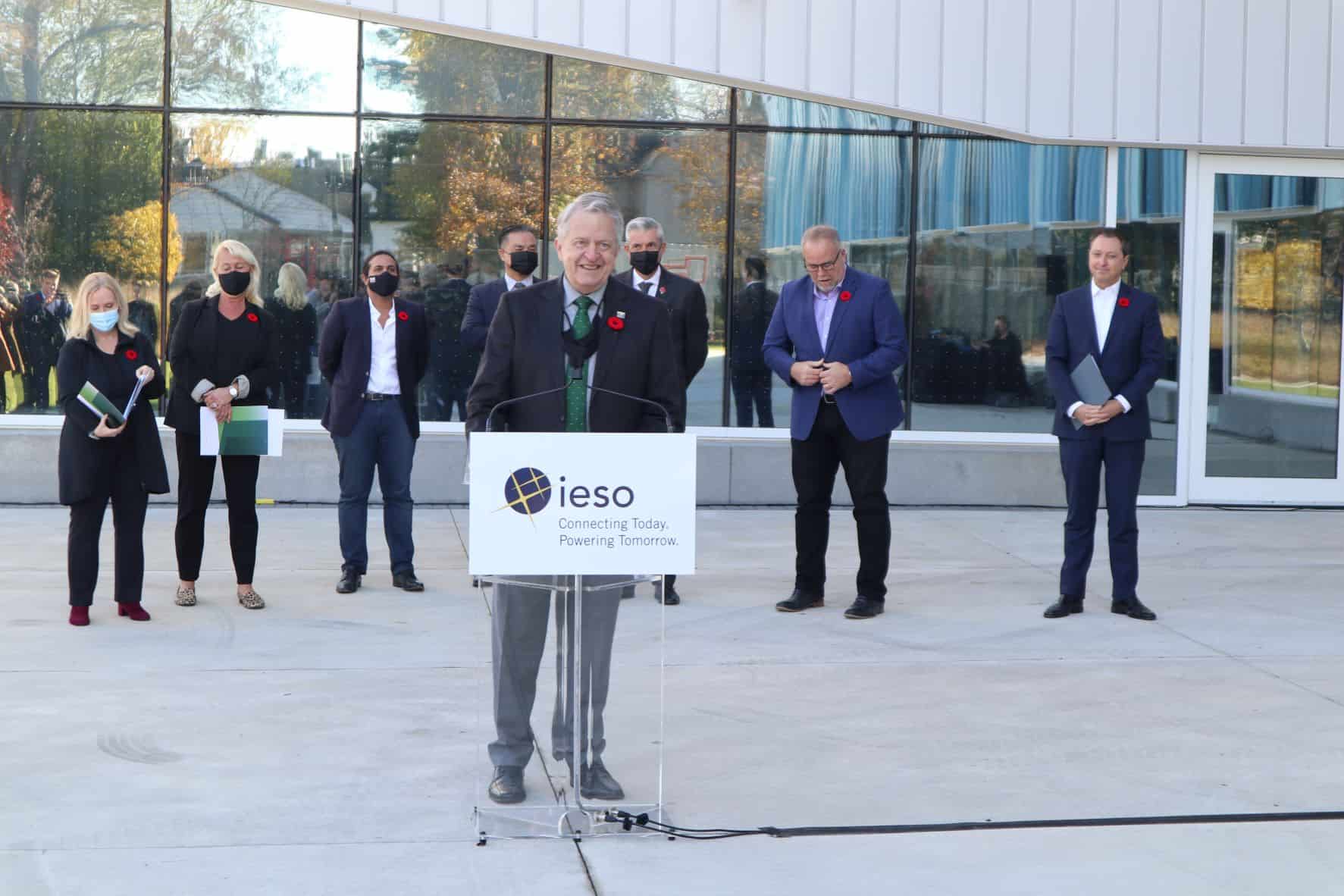New $1.4 million investment will test energy use and supply in Oakville
Published November 10, 2021 at 5:42 pm

The Independent Electricity System Operator (IESO) announced Wednesday in Oakville it is investing $1.4 million to test smart grid platforms that more efficiently co-ordinate energy use and supply on a local level.
Additional funding of $2 million is being provided by project partners, including $500,000 from Oakville Hydro.
With more than 5,000 megawatts of local energy supply available in Ontario, communities like Oakville are playing an increasing role in providing for their own energy needs.
“Small-scale electricity supply in communities is growing rapidly with local generation, storage and demand response projects becoming increasingly cost-effective and reliable,” IESO President and Chief Executive Officer Lesley Gallinger said at the announcement made at the Oakville Trafalgar Community Centre.
“As grid operator, we see great potential for communities to help meet their own energy needs, but also help us in our work to ensure reliability across the province. These projects will help make that happen.”
Ontario’s Minister of Energy Todd Smith, Oakville MP Stephen Crawford, Parliamentary Assistant to the Minister of Energy, and Oakville Mayor Rob Burton were also on hand for the investment announcement.
Through its Grid Innovation Fund, the IESO is supporting three pilot projects that demonstrate how locally-based supply can operate in tandem with broader grid operations.
“Local energy supply is playing an important role as part of Ontario’s electricity grid, helping communities meet their own energy needs and supporting the grid as a whole,” Smith said.
“The IESO’s Grid Innovation Fund, and the projects it’s supporting, will test and demonstrate how we can improve the integration of distributed energy resources with the goal of improving reliability and affordability for customers.”
Each project focuses on a different aspect of interoperability between local distribution networks and the provincial grid.
Co-ordinating Provincial and Local Electricity Networks:
This project will provide a platform that brings together real-time energy supply and consumption information at the local level – giving local hydro companies a more detailed view of local energy sources within their systems, and identifying where local suppliers can provide energy to meet local demand.
It is a partnership with Oakville Hydro, Survalent, Elexicon Energy, London Hydro and Waterloo North Hydro. The IESO is providing $500,000 to the project with additional investments of $500,000 from project partners.
Creating Local Energy Markets: This simulation project will model how local distribution companies can operate dynamic local electricity markets, similar to the IESO wholesale market operating at the provincial-level. Here, local energy resources will compete to provide supply to meet local demand on an ongoing basis. This project is a partnership with Powerconsumer Inc., Newmarket-Tay Power Distribution, Elexicon Energy and NODES-tech. The IESO is providing $480,000 to the project with additional investments of $1.1 million from project partners.
Enhancing Local Electricity Demand Forecasts: A new tool using real-time utility data and machine-learning techniques will be developed to create improved, hyper-local demand forecasts. More agile planning will help optimize the use of solar panels, energy storage and electric vehicles to meet local needs. This project is a partnership with Peak Power, Oshawa Power, and EnerFORGE. Funding amounts of $425,000 will be provided by the IESO and an additional $425,000 from project partners.
“Local energy supply has the potential to promote more sustainable communities and reduce pressure on the provincial system as well as the need to build new large infrastructure,” Crawford said.
“The three exciting projects announced today will each focus on a different aspect of interaction with local distribution networks and the provincial grid.”
Smart grid technologies look to reduce energy costs for customers, improve the reliability and resilience of the distribution system and lead to more sustainable outcomes in the communities they serve.
By supporting the development of local energy supplies, smart grid technologies also reduce reliance on the provincial grid and the need to build large infrastructure such as transmission lines and large generators.
Since its inception in 2006, the IESO’s Grid Innovation Fund has supported 230 projects.
insauga's Editorial Standards and Policies advertising





